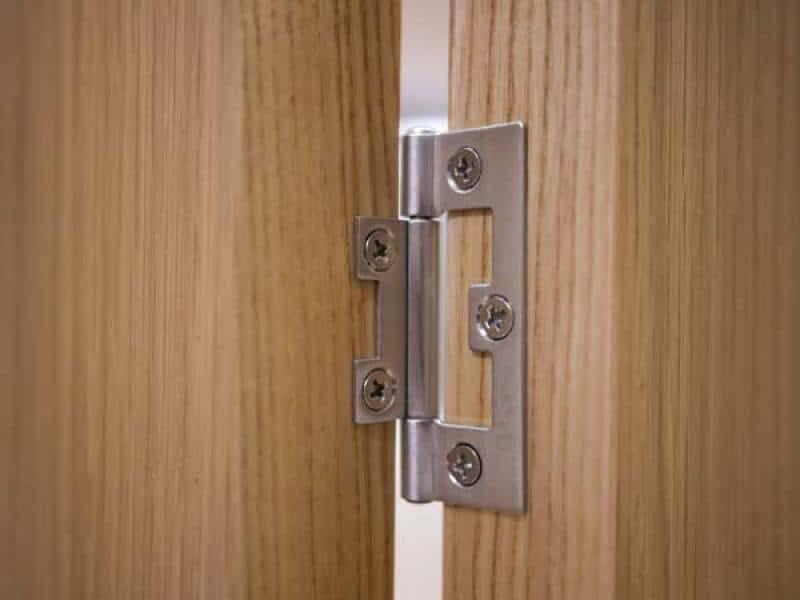We will be closed for Christmas from 3pm on Friday 19th Dec and re-opening on Monday 5th Jan. Any orders placed now will be delivered in the New Year. Merry Christmas!
We will be closed for Christmas from 3pm on Friday 19th Dec and re-opening on Monday 5th Jan. Any orders placed now will be delivered in the New Year. Merry Christmas!
We will be closed for Christmas from 3pm on Friday 19th Dec and re-opening on Monday 5th Jan. Any orders placed now will be delivered in the New Year. Merry Christmas!

Home / How to Adjust an Internal Door
 Wooden internal doors look stunning, provide a natural sound barrier and have good insulating properties too. However, since wood is a natural material, it is prone to changing over time.
Wooden internal doors look stunning, provide a natural sound barrier and have good insulating properties too. However, since wood is a natural material, it is prone to changing over time.
Heat, moisture and age will all have an impact on the condition of your door – and if your home is humid or the climate in your area goes through a lot of changes, then it may swell, shrink or warp. You can prevent a lot of this by treating the wood. In addition, if you notice that the door is sticking, it can usually be adjusted to fix this.
Check out our range of internal doors here!
There are two main issues that you are likely to experience with a wooden door. One is that the door may start to stick if it swells, or if you fit new flooring that reduces the gap between the floor and the bottom of the door. The other is that the door may end up swinging open on its own if the door frame is not plumb. Let’s look at both of those in turn.
How to shorten a door
If one of your internal single doors is too long, or you are fitting a thicker carpet that stops the door from moving freely, then you will need to shorten the door by taking some length off the outer edge.
Hollow doors come with a hardwood lipping that surrounds the hollow core. The lipping is usually big enough to allow you to safely remove up to one 1cm of wood on each edge. With MDF or laminated doors, the lipping is typically thicker than the one on a hollow door, so you can remove slightly more. It is still best to purchase a door that is very close to the correct size, rather than trying to significantly cut the door down.
 How to Make a Door Frame Smaller
How to Make a Door Frame Smaller
If the door is too short, or too narrow, then don’t panic! As long as the difference is a minor amount, it is possible to work around it quite easily.
Take a look at our range of external door frames here!
 How Do I Adjust the Hinges?
How Do I Adjust the Hinges?Once you have an appropriately sized door and opening, you will need to hang the door in the frame. If the door is already hung and appears to be the right size but is sticking, then it could be that the hinges have sagged or are too loose.
Adjusting the screws and hinges can help to ensure the door is a perfect fit. Hinges that are proud may creak or stick. You can stop this by ensuring that the leaf does not stand proud of the face of the jamb. Simply remove the screws to access the mortice, and then cut along the compression mark left where the hinge sits, to expand the mortice. IF there is paint, debris or wood there, use a sharp chisel to chip it away then replace the hinge.
If the gap between the door and the frame is too small, you can widen it by adjusting the hinges. To bend the hinge, place the butt end of a nail between the hinge leaves, or against the knuckle. Pull the door closed, slowly and carefully, and the nailset will force the gap to widen. Take care when doing this, because it can damage the hinge if you try to adjust it too far.
Adjusting the hinges will work only for very small changes, but it can be a quick and easy way to fix minor alignment issues.
For more information on our back doors, see the following:
You’ll need to trim mm off the left & right of each door
You’ll need to pack mm either side of the frame
You’ll need to trim mm off the top and bottom of each door
You’ll need to pack mm above
You’ll need to trim mm off the left & right of each door
You’ll need to pack mm either side of the frame
You’ll need to trim mm off the top and bottom of each door
You’ll need to pack mm above
You’ll need to trim mm off the left & right of each door
You’ll need to pack mm either side of the frame
You’ll need to trim mm off the top and bottom of each door
You’ll need to pack mm above